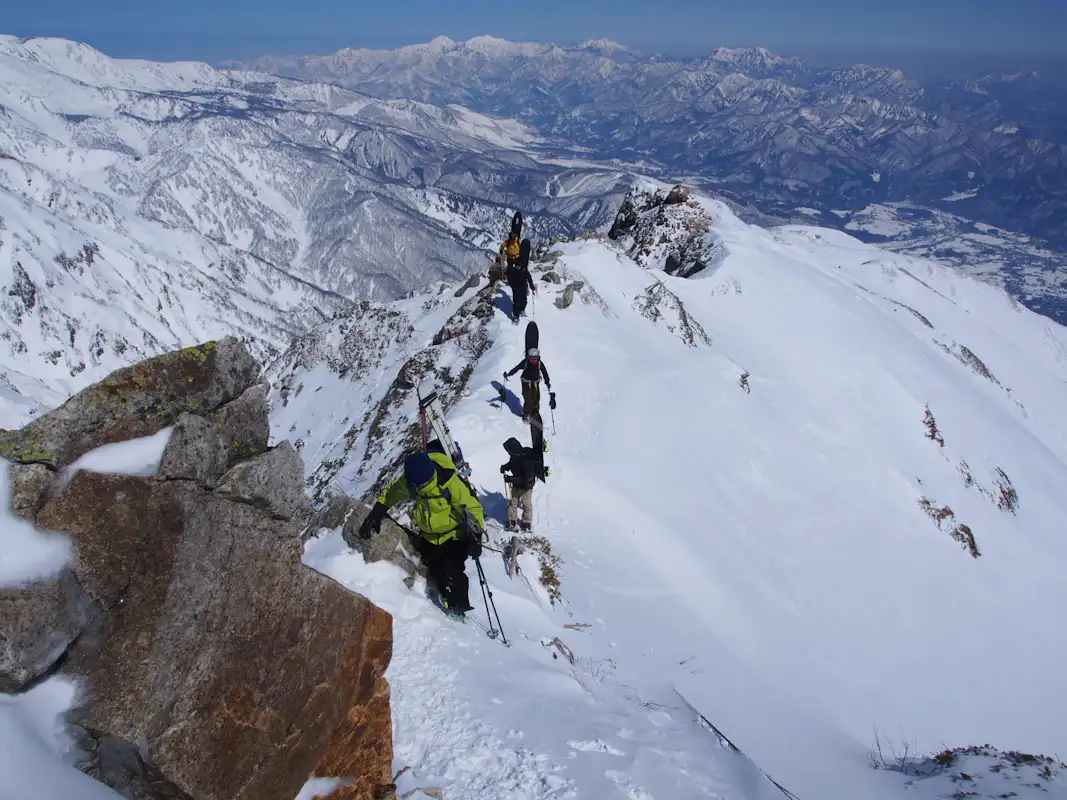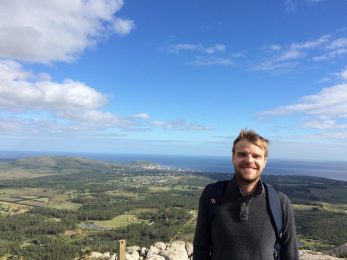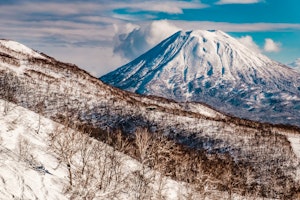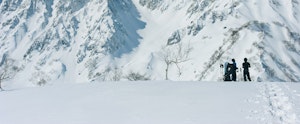Located on the western end of Japan’s main island of Honshu, Hakuba is a picturesque valley in the heart of the Japanese Alps.
It is also one of the top freeriding spots in all of Japan! Its close proximity to the Sea of Japan means the area is blessed with plenty of fresh powder at the beginning of each season: between 10 and 16 meters in most places!
The valley itself is home to 11 ski resorts and surrounded by many others. Freeride opportunities abound and the mountains found in this section of the Japanese Alps offer many steeper and longer runs than do the ones in other popular ski touring destinations, such as Hokkaido.
When you’re not on the powder, Hakuba also offers a slightly more cultural experience than other resorts. With little major tourist infrastructure, many hotels are built in traditional architecture fashions and have similar layouts to a Japanese house.
While it is not hard to get by in English here, there will be no trouble finding authentic Japanese cuisine and enjoying some of the local culture when you're away from the slopes.
Not convinced yet? Well, we’ve compiled some facts and useful information below to give you a head start on planning your next ski holiday to Japan! (Oh yes, you will be convinced by the end of this.)
What Makes Freeriding in Hakuba Amazing?
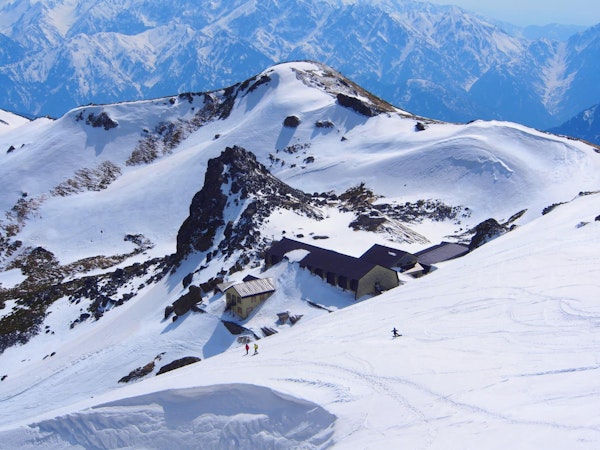
There really are plenty of reasons to head out on a freeride skiing adventure in Hakuba.
The powder quality and quantity is just about as good as anywhere else in Japan. Expect, on average, 11 meters of snow during the ski season with occasional storms occurring to refresh the top layer.
Since Hakuba sits within the Japanese Alps, it offer taller mountains than other popular skiing destinations. This means there are steeper slopes, higher starting points and drops for freeride skiers to take advantage of that might otherwise not be found in Japan.
The Japanese Alps also present some of Japan’s most stunning scenery, with views that can easily rival those of any other major mountain ranges.
Finally, unlike other popular Japanese resort areas, Hakuba has retained more of the local culture. When you are not out on the slopes, you will have an easier time finding local food and experiencing more of the local culture.
Unwinding after a long day out on the slopes in one of the local onsen, or hot springs, is also the ideal way to finish each day. Nothing feels better than a hot soak after a cold day, after all.
Check out our list of the top 5 reasons to go skiing in Japan!
Where to Go? Best Freeriding Spots in Hakuba
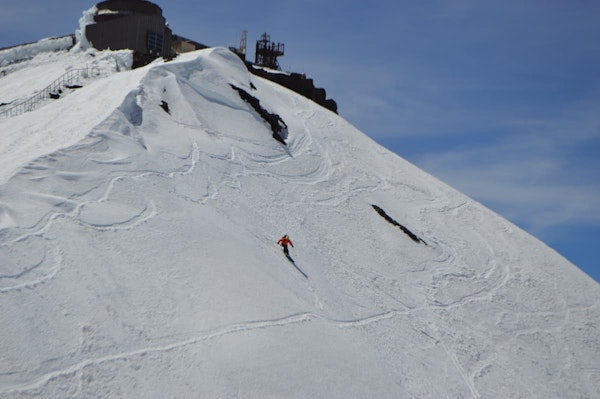
1| Happo One
Offering easy access to the backcountry and excellent powder quantity and quality, it’s no wonder that Happo One is one of Japan’s most famous – and largest – ski resorts.
The spot’s stunning beauty, with panoramic vistas out over impressive mountains and the surrounding scenery, led it to be named a venue for the 1988 Winter Olympics.
The whole region is blessed with plentiful powder of extremely high quality and Happo One is no exception, another reason it got a nod to host Olympic events.
Runs here stretch east from the 2.696-meter-tall Mt Karamatsu down through the fan-like valleys of Nakiyama, Shirakaba, Kokusai and Sakka. Surrounded by 3.000-meter-high mountains, there’s no shortage of stunning scenery wherever you head.
Getting off-piste and into the backcountry is also incredibly easy with plenty of options for freerdiers of every level waiting to be experienced.
For freeride skiers looking for a challenge, there are plenty of steep slopes and extreme runs. These present various challenges, including changing terrains, but are always sure to lead to a stimulating and fun experience.
2| Hakuba 47 & Goryu
Combining steep slopes and challenging terrains with less intense one, Hakuba 47 and Goryu are the perfect freeride ski spots for the peak season.
The two interconnected resorts combine to offer stunning scenery, perfect powder and varied terrain. Neither one is very big, but both are chock-full of excellent runs and also offer plentiful opportunities to ski in the backcountry too.
Hakuba 47 is best suited for advanced skiers seeking out powder and treelined runs. There are plenty of steep powder runs and various different points from which to begin your descent. The steepest runs weigh in at 32 degrees and you can expect nearly 900 meters of vertical drops as well as some epicly long runs, including one that lasts for 6.4 kilometres.
Goryu, on the other hand is best left to beginners. There are plenty of easy runs lower down in the resort and it is the perfect place for first-time freeride skiers to get used to getting off-piste.
Higher up on the mountain is perfect for intermediate skiers and an excellent place to start a freeride day before heading out over the Hakuba 47 and really testing yourself.
check out what PRO ATHLETE wAKANA hAMA thinks about freeriding in happo one and hakuba 47 & goryu!
3| Shiga Kogen
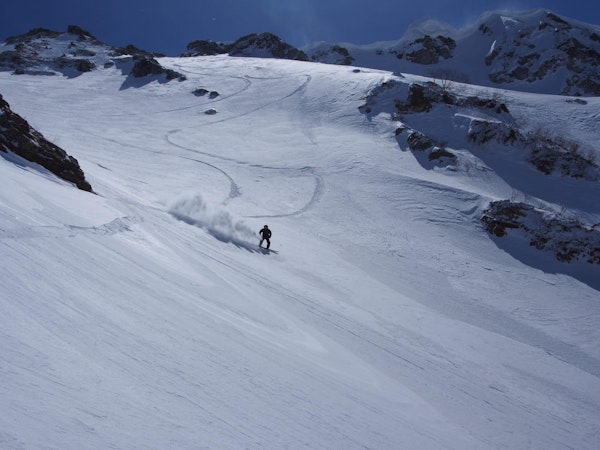
Located in Nagano, on the outskirts of the Hakuba Valley, Shiga Kogen is a world-renowned freeride skiing destination.
Made famous by the 1998 Winter Olympics, the ski spot offers extremely varied terrains and excellent options for freeride skiers of all levels.
Composed of 19 ski areas, which are well-connected by lifts and gondolas, there are 600 hectares of slopes to explore here. There are also plentiful options to go off-piste too.
Like much of this inland Japanese region, the plentiful and dry powder Shiga Kogen receives is the perfect texture for long and fast runs down steep slopes, which is what attracted the Olympics to this spot in the first place.
Designated at a UNESCO Eco Park National Park in 1971, Shiga Kogen is a prime example of people and nature coexisting in harmony. This is exemplified by the pristine and beautiful scenery you can see as you make 1.000 meter vertical descents from high slopes on the Japanese Alps back into the valleys below.
4| Nozawa Onsen
Widely considered to be the birthplace of skiing in Japan, Nozawa Onsen is a charming town to the northeast of the Hakuba Valley and boasts large freeride spots with plenty of variety.
The main freeriding area extends from the foot of Mt Kenashi, which rises to 1.650 meters in elevation, and covers 297 hectares. With an elevation differential of 1.085 meters and high quality snow, the area is perfect for intermediate freeriders looking to have a great time.
The area boasts more than 50 kilometers worth of runs, many of which start from the top of Mt Kenashi and wind through trees back toward the valley below.
As an added bonus, the resort is pretty close to many others in the Hakuba Valley area, meaning plenty of other spots to explore too.
5| Myoko Kogen
Sandwiched in between Nozawa and the Hakuba Valley, Myoko Kogen has a near century-long history of freeride skiing.
Receiving an average of 13 meters of dry and light powder each season, Myoko is perfect for freeriders of every level. Known for tree-filled slopes, great off-piste opportunities and long vertical runs, it is especially great for first time freeriders ti get a hang of the sport.
While there are some spots here for more technically advanced skiers, Myoko also offers easy access to several other nearby resorts with longer and steeper verticals.
Particularly intrepid freeride skiers can slap on some skins and head farther up to the summit of Mt Myoko before enjoying a fantastically long run back down into the tree line. The views coming down are some of the best that the Japanese Alps has to offer.
What is the Best Time to Go Skiing in Hakuba?
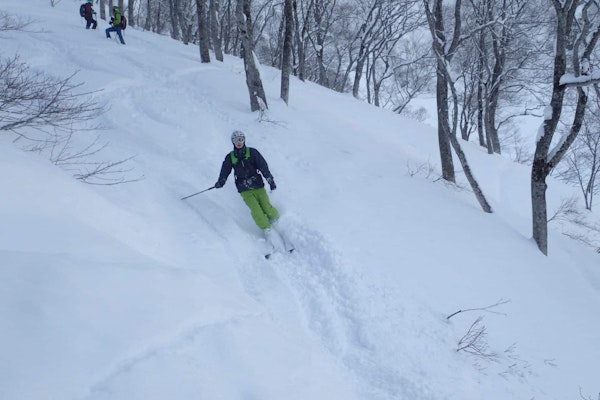
The ski season in Hakuba generally runs from December to April with the peaks months being January to March. North-facing mountain slopes will also generally have snow into May.
During this time of year, expect plenty of snow and sunshine. Not a lot of powder falls during the winter, but snowpacks are generally up to 11 meters deep. Expect about 60 millimeters of snow per month throughout the ski season. (Much more precipitation falls outside of the season, which feeds the snowpack.)
Average daily temperatures can also be quite mild throughout the ski season. Expect them to run from freezing to 5 °C on the valley floor. Remember, at higher altitudes temperatures tend to be colder and feel colder due to windchill.
How to Get to Hakuba?
Any trip to Hakuba will begin with a flight into Tokyo’s Narita International Airport (NRT). From here, you have a few options to get to Hakuba.
From NRT, Hakuba is a scenic 4.5 hour drive through the foothills and into the center of the Japanese Alps.
However, trains in Japan are much faster, so many guides will recommend catching the Nagano bullet train (Asama Shinkansen), which gets you to the nearby city in only 90 minutes.
From Nagano, you can either take a local train or bus on to Hakuba.
NRT and Tokyo’s other international airport, Haneda Airport (HND), also offer direct buses right to Hakuba during the ski season.
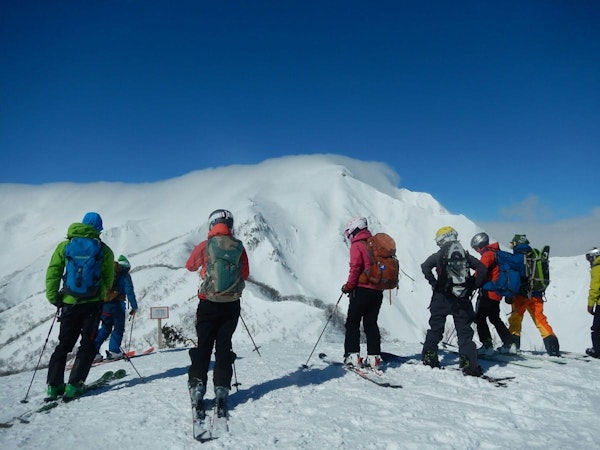
So what are you waiting for? The stunning scenery, pristine powder and plentiful runs of Hakuba are waiting. See you there!
